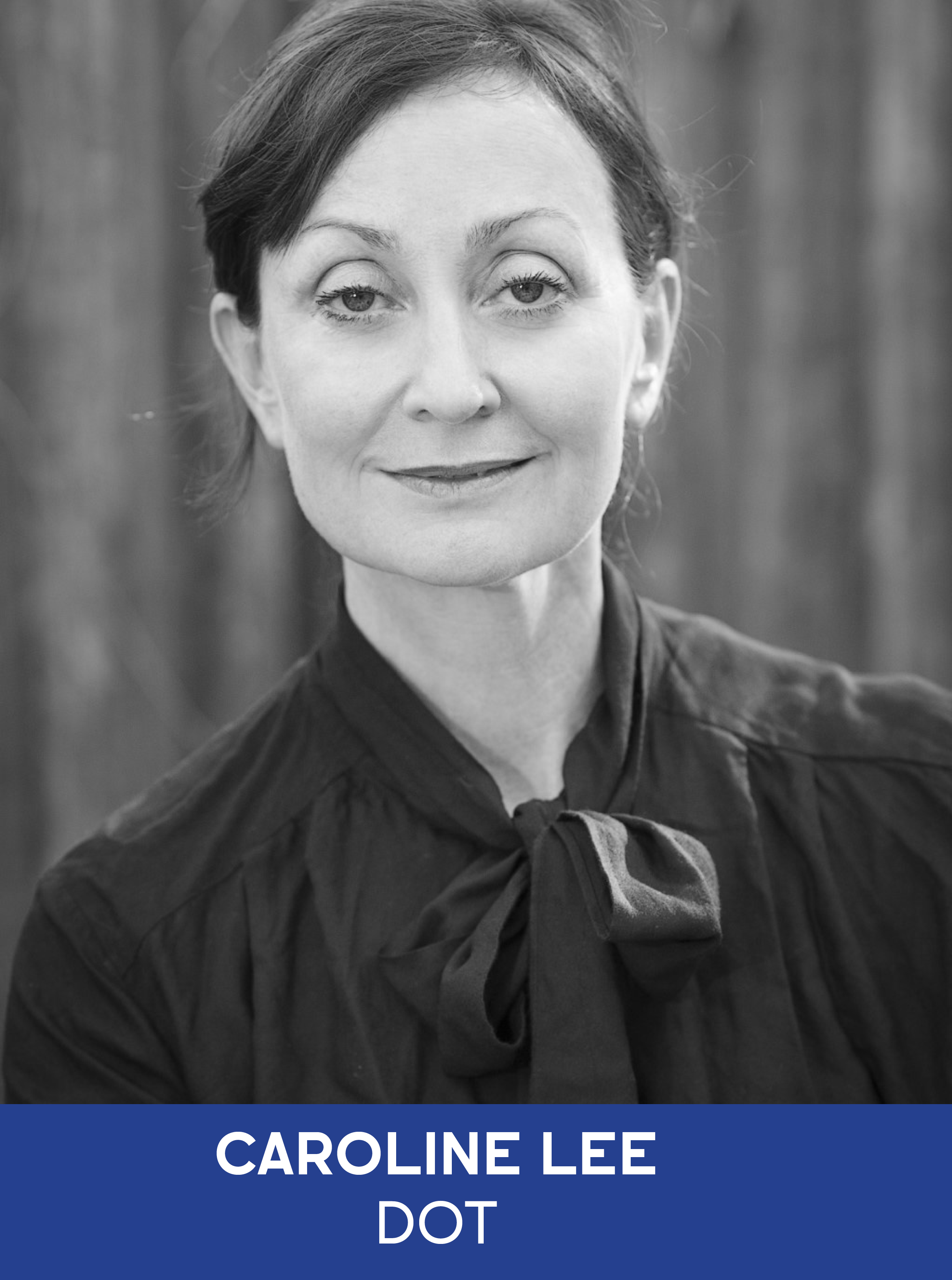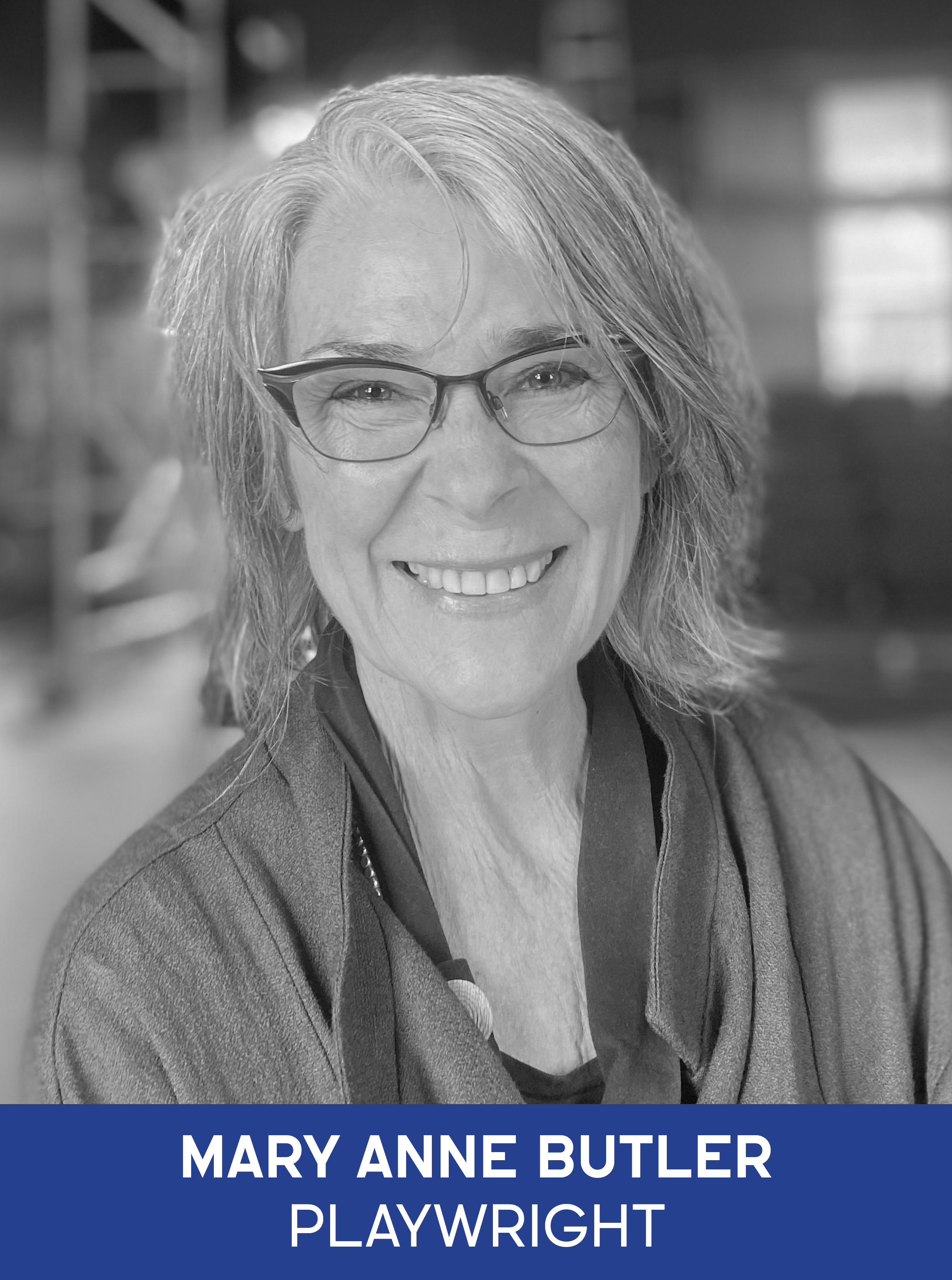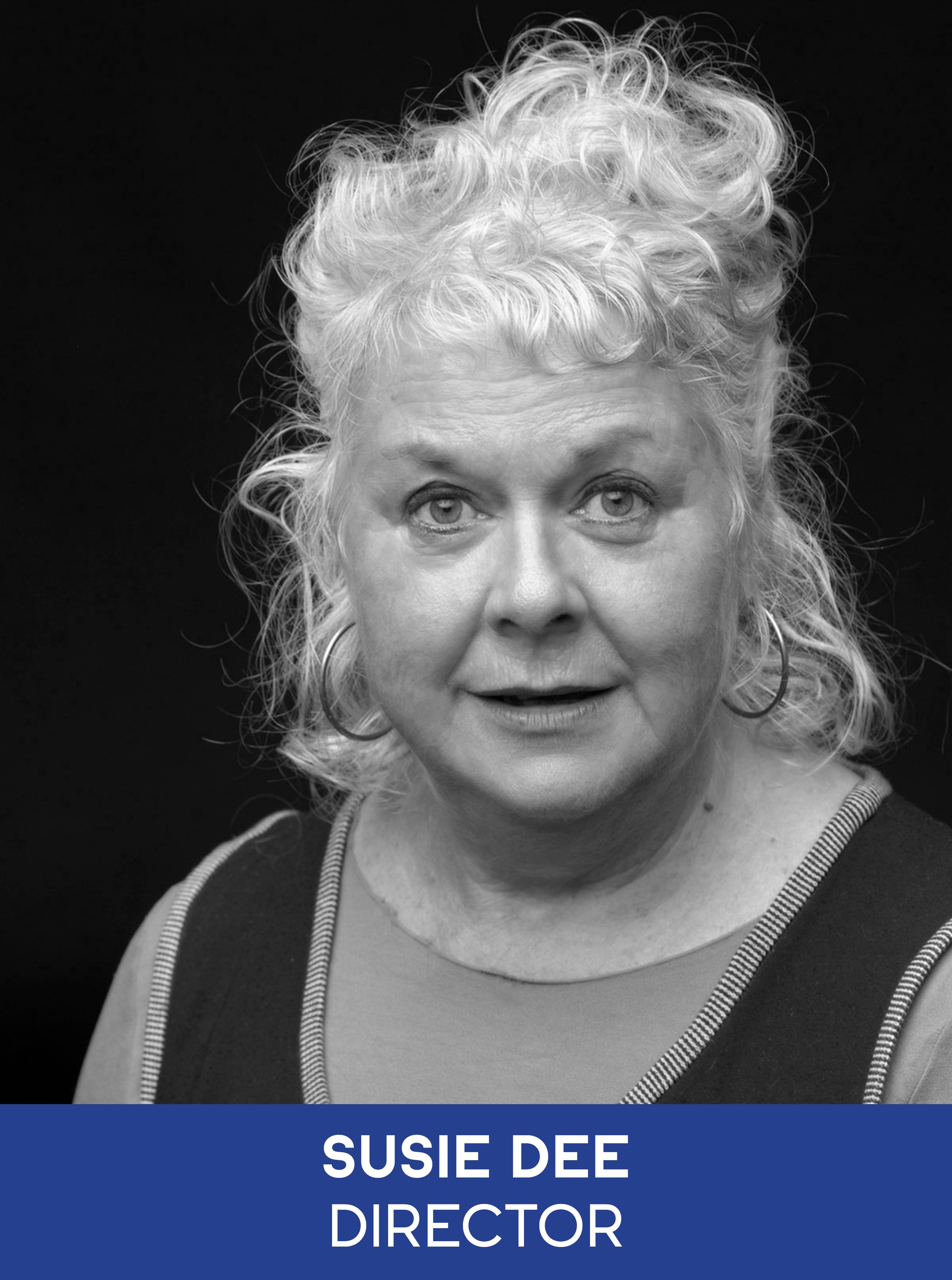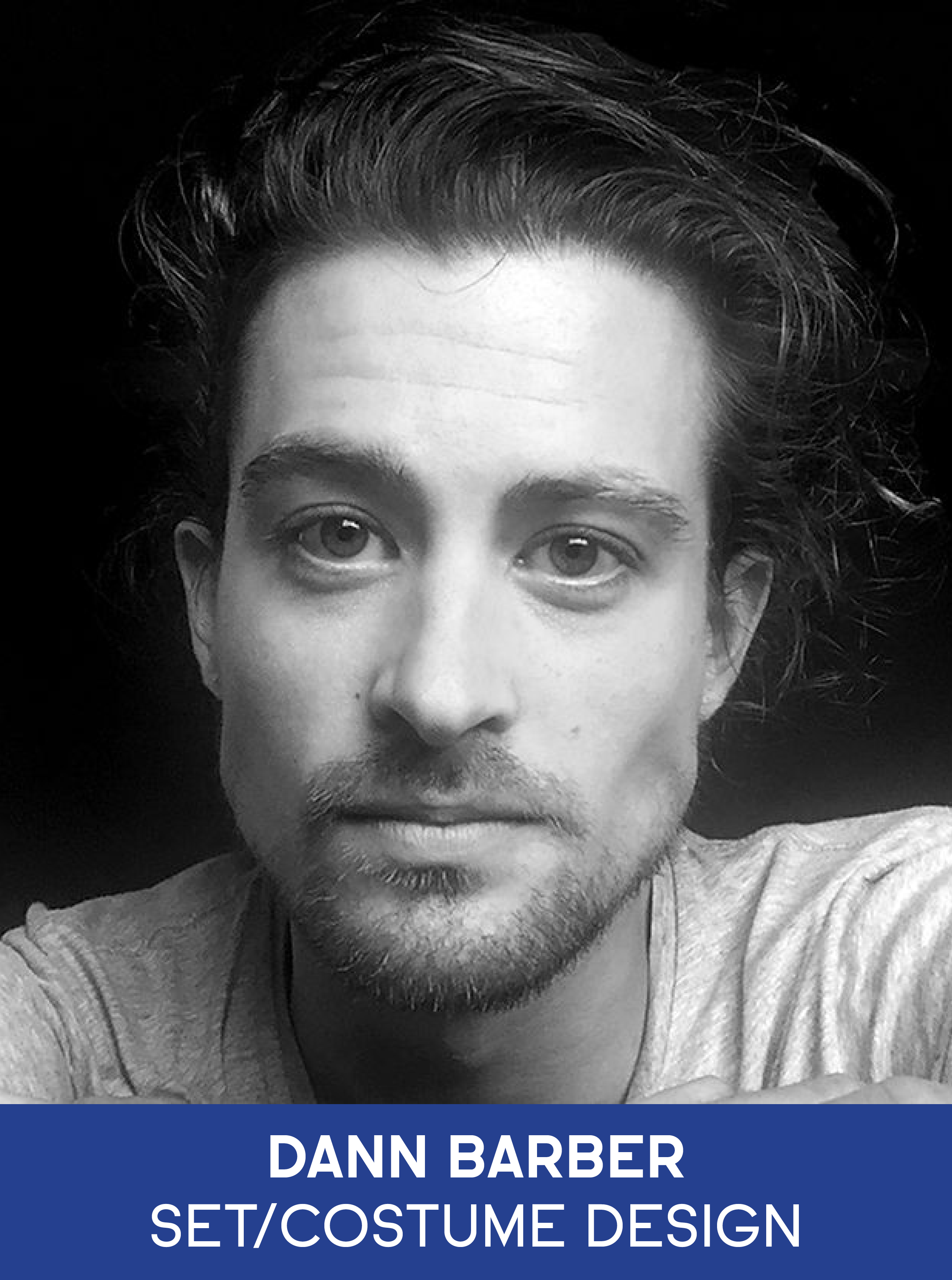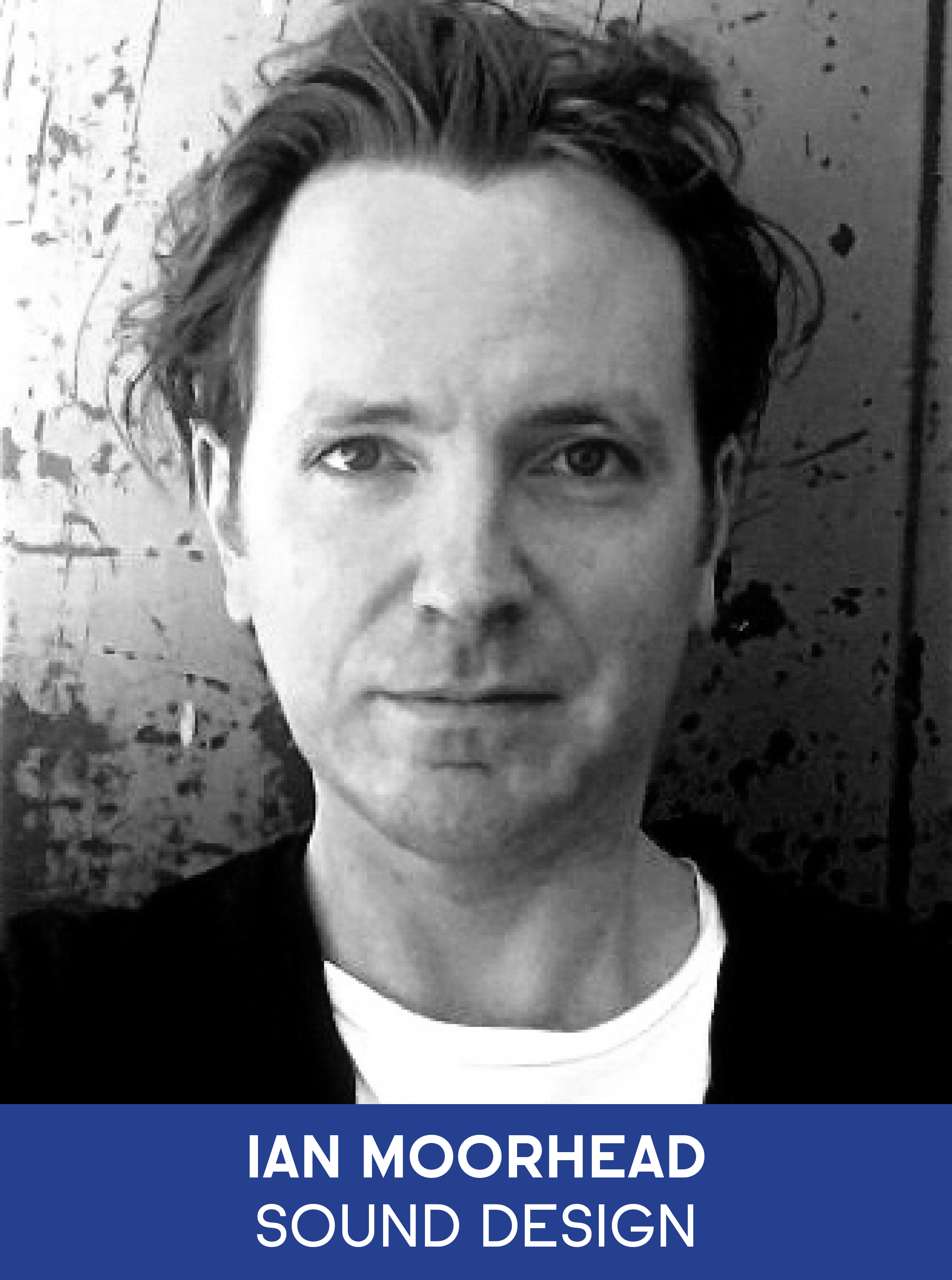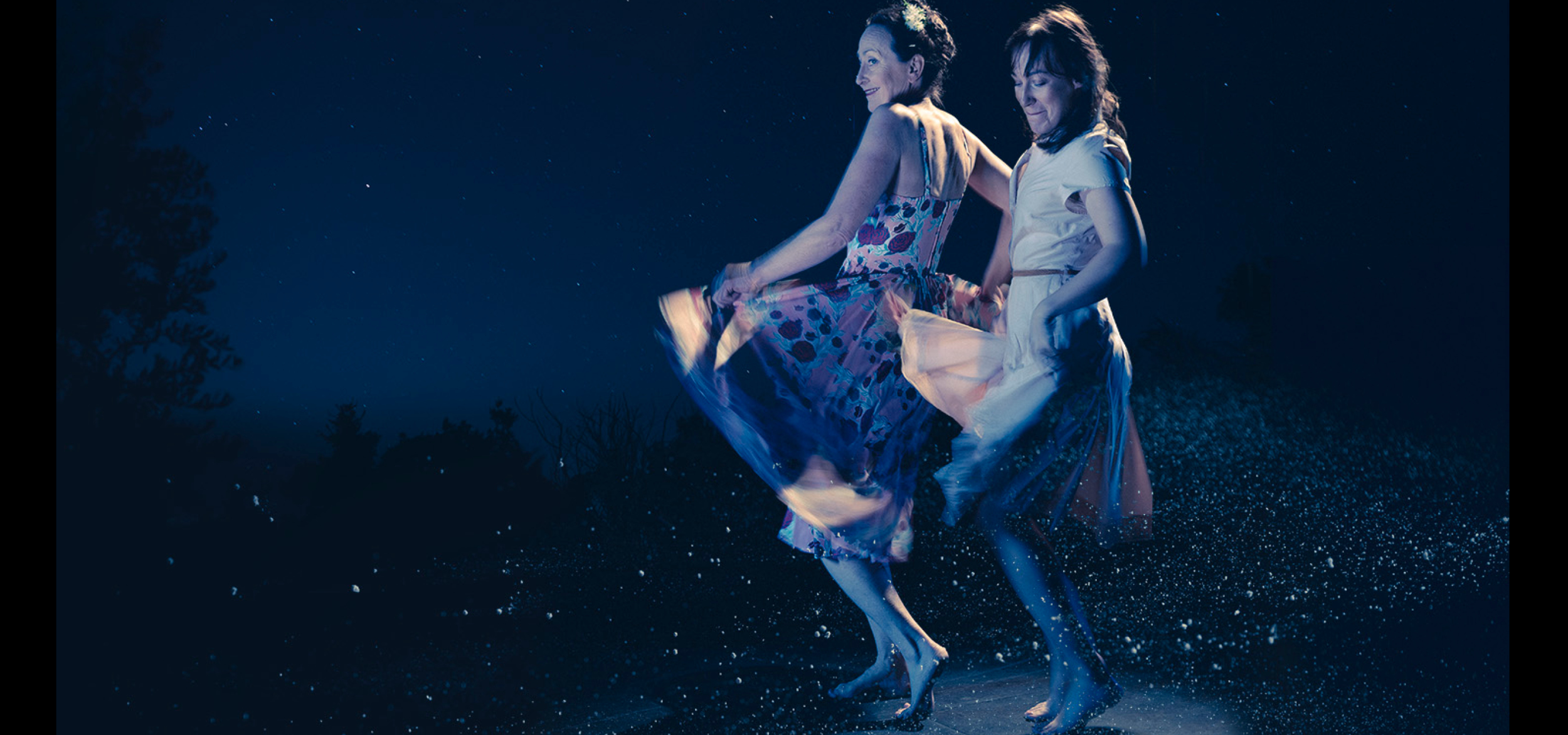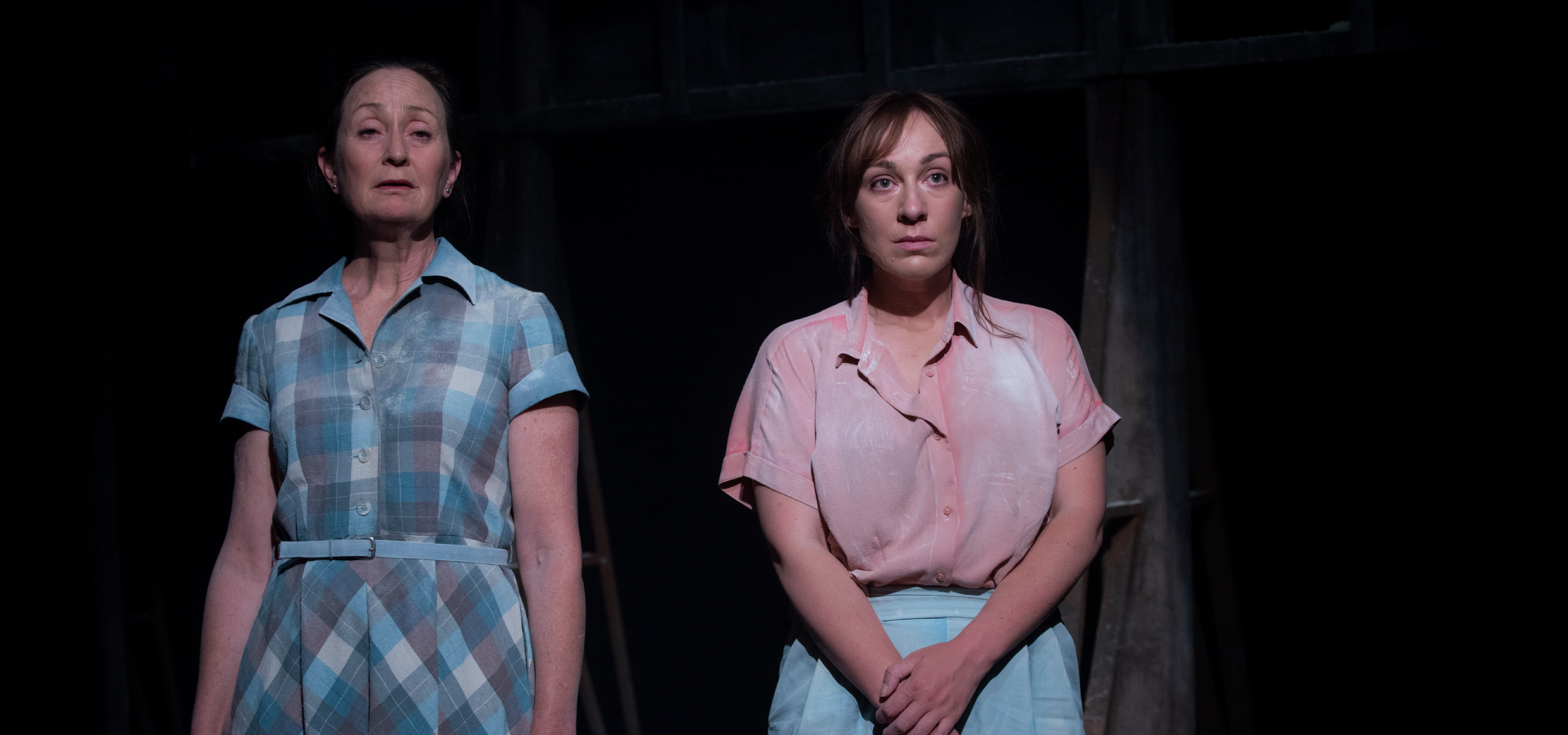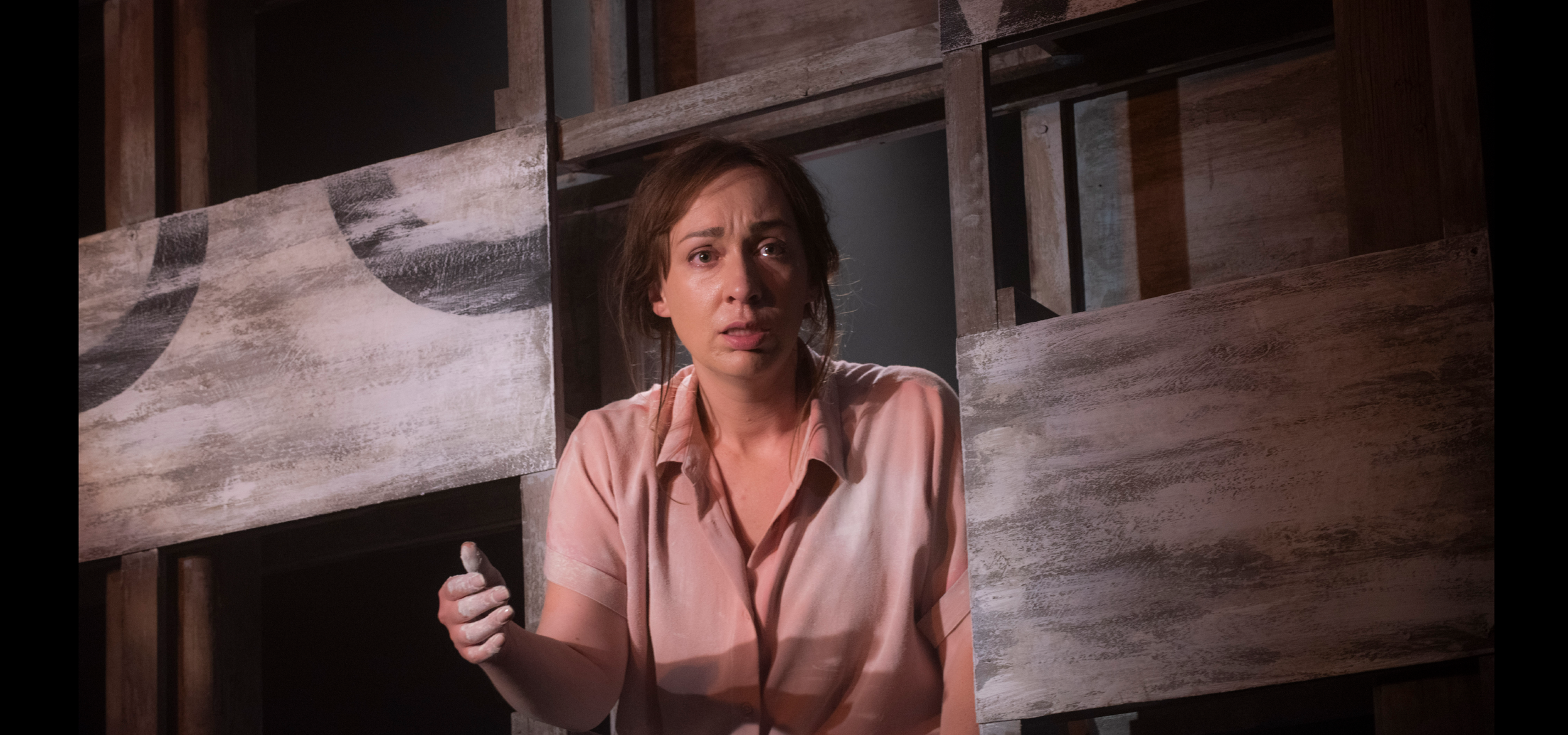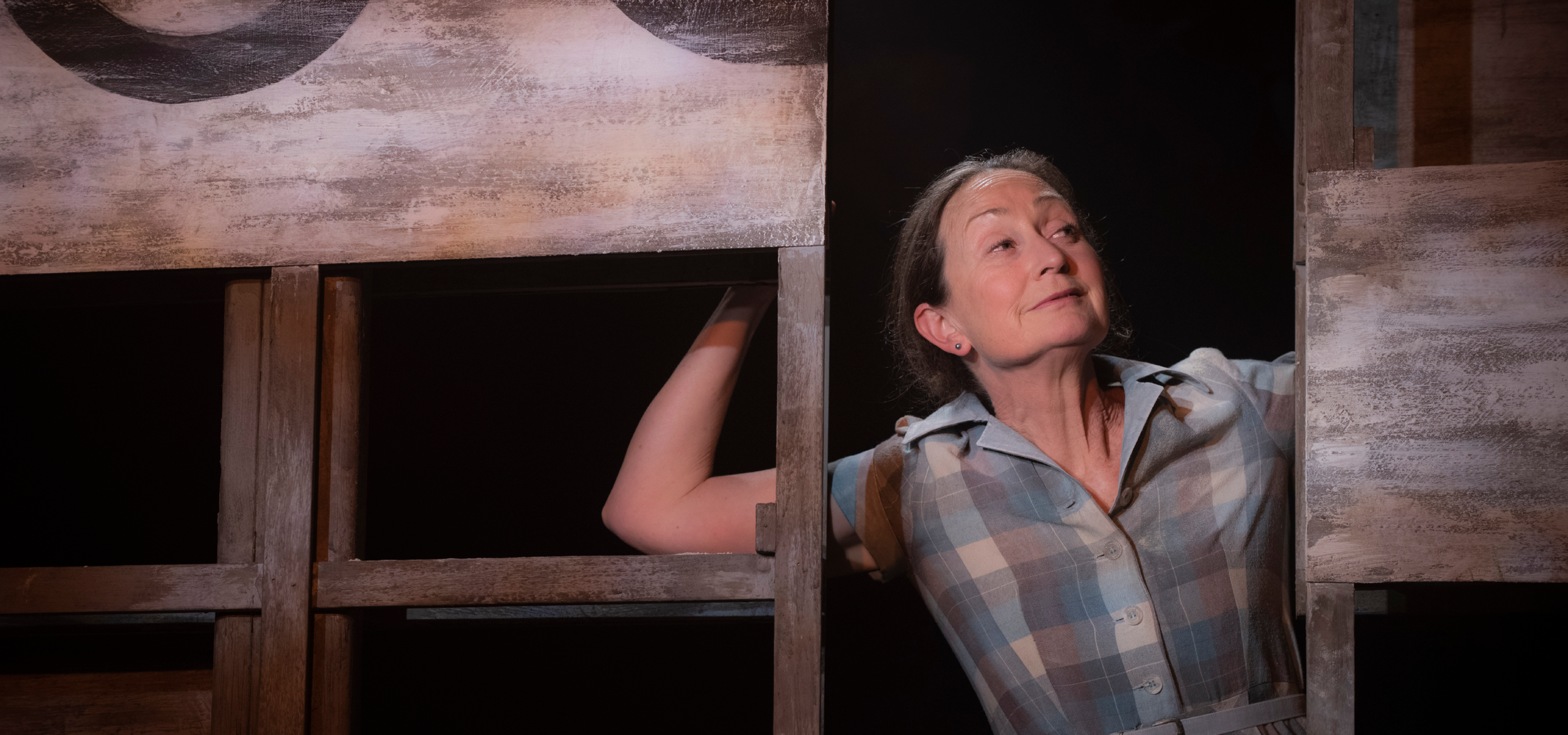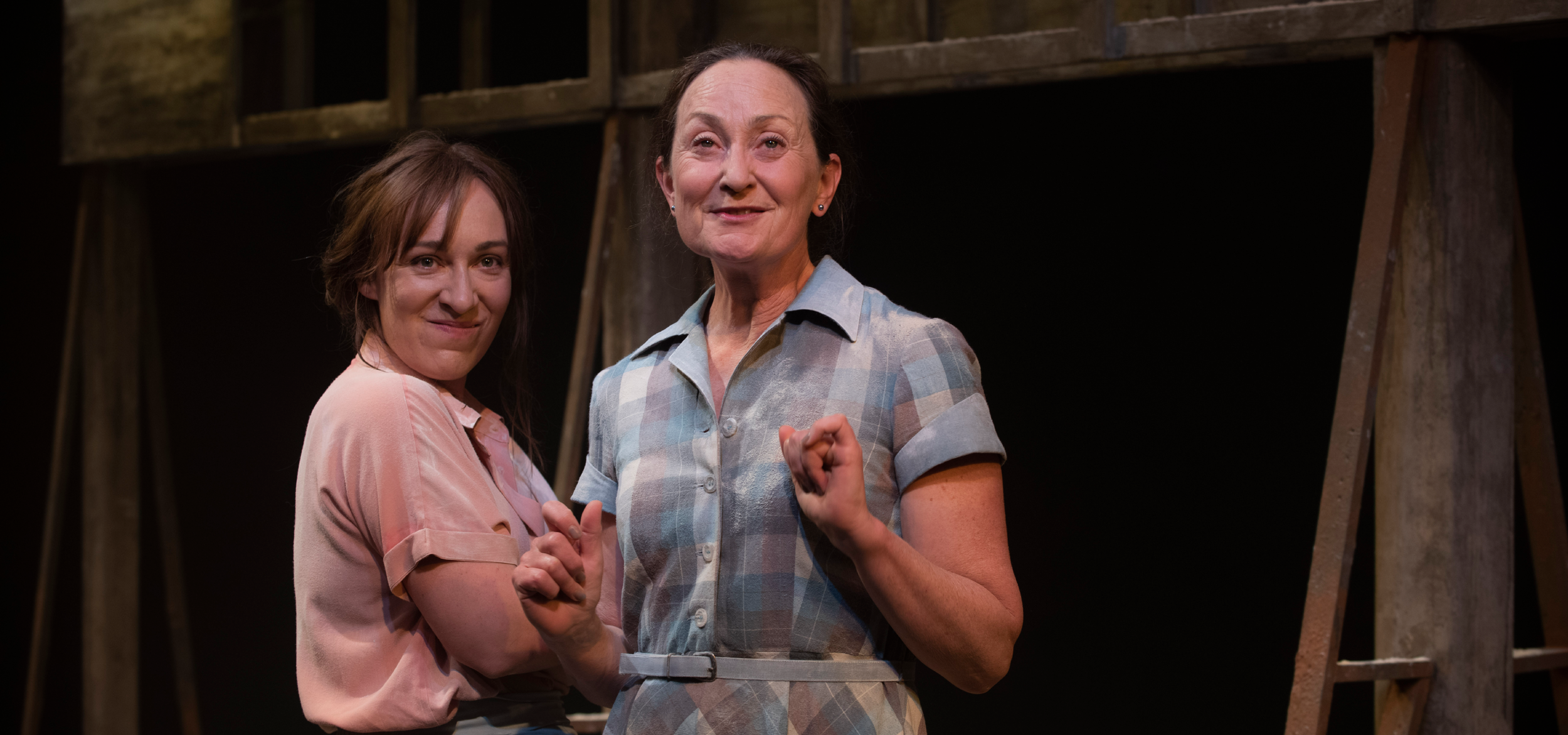For more information please email ella@redstitch.net.
Wittenoom Trailer
PRODUCTION INFORMATION
Wittenoom is a new Australian play directed by the award-winning Susie Dee, featuring Emily Goddard (This is Eden) and Caroline Lee OAM. Wittenoom is a story of family, love, hope and Country. Dot is dying of mesothelioma; an incurable lung disease caused by blue asbestos.
Her prognosis is days, if not hours left to live. Pearl sits by Dot’s bedside narrating her death, as the ‘Dogs of the Apocalypse' hover, waiting for Dot to finally let go. Flashback to The Past: Dot and Pearl live in Wittenoom; the blue asbestos mining town in WA’s Pilbara. So begin glorious days, when the Pilbara’s stunning landscapes, magnificent wildlife and close-knit community shaped an idyllic lifestyle; wild natured Dot making the most of every second, while teenaged Pearl tries to make sense of what her own life might be.
Wittenoom weaves Dot’s current mesothelioma treatment into the glorious past, juxtaposing vivid life with looming death in an ultimately hopeful reminder that life is here, and now: a chance gift to be lived to the full. The entwining of Dot and Pearl’s intensely personal story into the frame of the broader mining industry asks questions of accountability in an era where the health and cultural impacts of mining ricochet as heavily in 2023 as they did in 1963, pondering the health and safety of community versus the drive of corporate greed.
-
As a theatre director, I am always hungry and on the lookout for works that are bold, current and vibrant, works that resonate and are unafraid to tackle all corners of the Australian psyche.
I was lucky enough to meet Mary Anne Butler at a National Playwriting Festival many years ago in Brisbane. I remember her eyes, her directness and her liveliness.
But I was a director based in Melbourne and she, a playwright based in Darwin.
She contacted me a few years later, sending me her award-winning play Broken. Having read it, I was immediately taken with the characters, the poeticism and the vivid landscape she had managed to capture. We joined forces and pitched it to a couple of main stage companies, but with no joy. Then, we were lucky to have Lab Kelpie, (a small independent company) pick it up and produce it at fortyfivedownstairs theatre in Melbourne in 2018. Mary Anne joined us for rehearsals, and it was a joy to have her in the room - she was thoughtful, insightful and gracious, and we both knew this would be the start of an honest, dynamic working relationship.
We started a dialogue again In 2020, this time on a new work originally titled Tiny Bones of Love (part of Red Stitch Actors Theatre’s INK Program), a work we both found ourselves struggling with. After a couple of early drafts and a flurry of emails and zooms I finally had the chance to visit Mary Anne in Darwin in 2021, where she showed me for the first time a new monologue that started like this:
The dogs of the apocalypse lie at her feet, ears alert.
…waiting…
They can feel it in their flesh-bones; under their fur
sense the rising of the soul into the night
as she floats, barely present;
not quite ready
to face the great emptiness.
I was immediately hooked, excited and curious to see where it could lead. Mary Anne was just about to depart in her campervan with her beauty of a dog, Chet, on a road (and research) trip from Darwin to Broome. Then, on this journey, she came across the story of a town in the Pilbara called Wittenoom - and its deadly legacy. She then saw how to frame and house this vivid story of death and dying.
In Wittenoom, the play, we see a mother and her daughter move to a remote mining town where a joyous life and looming death dance side-by-side in the blue asbestos dust. Two narratives slowly unfold, one set in the past where life is in full swing and the other in the present, about a body that is diseased and dying. They are, first and foremost, stories about fecundity and the giving of life, but also of the taking of it and an awareness of time running out. They revolve around loss, love, memory, betrayal and grief and in them Mary Anne manages to capture ‘humanity’ in its most raw and fragile state.
In both Broken and Wittenoom, Mary Anne gives us a series of rich and multi-layered characters while also capturing the vast Australian outback, all in her typically spare, poetic style. Her writing, rich with imagery, visceral in its rendering, is also full of ideas that challenge and surprise. She has a gift for embedding humour and pathos into all of her plays, her wit sharp and bold and her heart ever present. For a director, all these elements are a gift, and in working on Wittenoom in preparation for its recent Red Stitch season, we had the luxury of having a short development with the two actors and composer present. Hearing the voices come alive off the page gave Mary Anne the opportunity to rethink the structure of her script, which in turn brought a whole new dynamic to the work.
Mary Anne’s writing is in so many ways potent, exemplary and courageous. She tackles and unpacks ideas head-on, with boldness, craft and gusto. She understands the demands of theatre in a way few writers do and working with her once again has been an absolute pleasure.
Susie Dee
-
Wittenoom the play wouldn’t exist without a hugely fortuitous combination of people and factors: Susie Dee, Janine Baines and the Red Stitch INK program were crucial in supporting and encouraging me to find the story. An Australia Council Literature Board grant was pivotal in providing me time to write it. Actors Caroline Lee and Emily Goddard, composer and sound designer Ian Moorhead and Ella Caldwell joined Susie to form the development team behind the work, giving intelligent feedback to an early script which moved it forward in massive leaps.
…but in truth, it first started when I stalked Susie Dee at a PlayWriting Australia conference
in Brisbane, in 2010…
It was my first conference as an attendee, and what stood out for me in the presented works
was Susie’s direction. The pieces she worked on were different, interesting, engaging in their
interpretation. At the end of the conference, I plucked up the courage to ask if I could speak
with her. She looked around the crowded room full of massive networking potential, nodded
her head and gave me fifteen minutes of her full and undivided attention: every bit of her
keen intelligence, intense curiosity and big heart focussed on an unknown playwright in a
massive act of professional and personal generosity. At the end of my stumbling ‘pitch’, she
gave me her email address and told me to send her what I had. I walked away from that
conference on a glowing cloud of hope.
I followed up via email, and unfortunately Susie couldn’t do the dates for that project.
Theatre being a long game, I remained hopeful that I would get to work with her at some time
in the future. Flash-forward to 2018. I met Susie for a coffee in Melbourne, and asked if she
would consider directing my next play, Broken. Broken had already had two sold out Darwin
Festival productions under the stunning direction of Gail Evans, and a Sydney season at Darlinghurst Theatre Company directed by Shannon Murphy in a powerful ‘radio program’ version, complete with radio
mics and live foley on stage.
As a playwright, it’s a great privilege to see your work re-imagined over time, and Susie
Dee’s fortyfivedownstairs production was riveting: sparse, and evocative, and enticing –
drawing audiences deep into a world layered with surprising imagery; drawing in a stellar
design team which made those bare boards rich with the imagery, sound and light of
Australia’s Central Desert. Between our Melbourne meeting and the production, Susie had
made her own trip to Central Australia to experience first-hand the unique landscape and
light where the play was set. She asked me to send her the research that had helped shape the play’s world: images, articles, sound grabs, interviews – and then she captured this world
with such absolute truth and integrity that it made me hungry to work with her again.
In 2019, Susie and I applied to the Red Stitch INK play development program as a writer /
director team. Red Stitch accepted the proposal, and from there we hunkered down to create a new work together.
I fail often as a playwright. Either I start with an idea which I don’t have the passion to live with for the three to five years it take me to research and write the play, or my craft skills aren’t yet quite up to the execution of possibilities which play around in my head so the wrack of self-doubt shipwrecks me and the work beyond rescue, or the idea / writing become trite and cliched, and I end up hurling at against the wall.
The less said about my first drafts for the INK program, the better. Suffice it to say they were
hurled up against the wall, with Susie Dee’s gentle encouragement. This is another reason
that I love working with Susie. Her honesty and directness in feedback are cased inside such
a massive heart and keen dramaturgical intelligence, that she urges me to push myself further
in my craft; and the work is always the better for it.
For the INK play I tuned deeper into my gut, which held a story I’d been quelling for years. It
was the story of my mother - Sally Butler - who died of lung cancer in 2001. I’ve never been
able to write about her. It’s been too close, too brutal. And now here she was, finally. Bubbling up inside me, demanding to have her story told.
Susie was due in Darwin in a fortnight, coming up for a few days development on a work I
hadn’t written yet, so I did what I call ‘the vomit’ – an intense and uncensored writing period where I let the words churn out of me without thinking about form, or structure, or character or storyline. I read a lot of poetry when I write, and during this ‘vomit’ period I came across the Barbara Kingsolver poem Hope; An Owner’s Manual in which she says: “Tiptoe past the dogs of the apocalypse that are sleeping in the shade of your future.” I saw my mum, dying of cancer, with two Dogs of the Apocalypse lying at her feet, waiting for her to die. This image
started a flow of words which were – essentially – the recording of my mum’s death, from her initial diagnosis to her end. I wrote this up as an uncensored 17-page monologue.
Susie arrived for our development and I handed her these pages. She took them into her
room, emerged 30 minutes later, and said “I love it. It’s not a play yet. You know that, don’t
you. But we can definitely work with this.”
…we were on…
The next week I headed off on a trip to Broome, a research trip for my PhD in Literature; a
novel and exegesis exploring the question: How do you write hope into the creative literature
of the Anthropocene? I stopped off in Kununurra for a night with my friend Jo Roach –
whose daughter Janine Baines was there. We listened to a Midnight Oil song, Blue Sky
Mine, and Janine told me that this song was written about the blue asbestos mining town of
Wittenoom, in WA’s remote Pilbara region.
I’d never heard of Wittenoom, or blue asbestos. I was gobsmacked by what Janine told me,
and ashamed that I’d never heard of the town before. John Gordon’s Foreword in this
publication offers up a deeply informed context of the history and ongoing issues resulting
from this purpose-built town, so I won’t repeat his vast and detailed knowledge here. But this
town lodged in my gut, and I knew instantly that I’d found the other half of my play.
I completed my road trip and hunkered down in the Broome library for three days,
researching Wittenoom. The characters of Dot – a single mother – and her daughter Pearl
came to me through reading and listening to some of the stories told by Wittenoom’s ex-
residents. While informed by my research, and while facts found on public record are
mentioned in the play, Wittenoom is a work of fiction; an imagining of what it would have
been like to live and work out in the remote Pilbara in the early 1960’s.
The play came out quickly after that road trip, shaping itself into a structure which jumped
between the present - Dot’s experience of mesothelioma (informed by my mum’s cancer
journey) – and the past; an imagined version of life in Wittenoom in the early 1960’s.
Another few days development courtesy of Red Stitch with more intelligent interrogation by
the development team tweaked the script until we felt it was ready to go. Then Red Stitch
programmed Wittenoom for 2023, and the amazing development team grew into a stellar
production team under the helm of Susie Dee, welcoming Rachel Burke as lighting designer,
Dann Barber on set and costume design, Cassandra Fumi as AD and stage manager, and
Georgie Bright as assistant SM.
There are many people and organisations I would like to thank for this journey: Susie Dee,
Ella Caldwell, Caroline Lee, Emily Goddard, Ian Morehead, Rachel Burke, Dann Barber,
Janine Baines, Lyniece Bolitho, Tanya Heaslip, John Gordon, Gail Evans, Ciella Williams,
Kelly Beneforti, Red Stitch Ensemble, Brown’s Mart Arts, the Australia Council for the Arts,
Michelle Broun, Jo Roach, Martin Pritchard, Robin Chappel and Angela Di Pasquale, whose PhD Sistemazione and death: the role of the Wittenoom asbestos mine in the lives and deaths of Italian transnational workers was a pivotal research document.
Wittenoom was written under the development support of the Red Stitch INK program, the
Brown’s Mart Build-Up program and the writing was supported by a grant from the
Literature Board of the Australia Council for the Arts.
Thank you to all the organisations and individuals who support the development of Literature
in all its forms, and who support and advocate for the new Australian theatre works.
Mary Anne Butler
Naarm (Melbourne), December 2022
Promotional photo by Robert Blackburn & Work Art Life Studios.
Production photos by Jodie Hutchinson.








